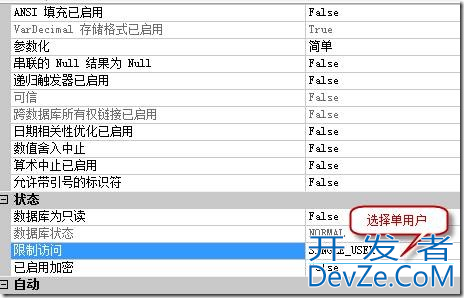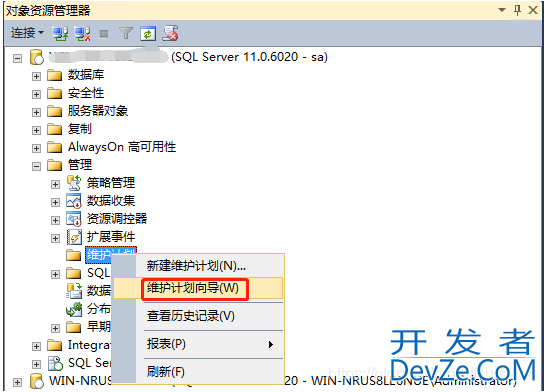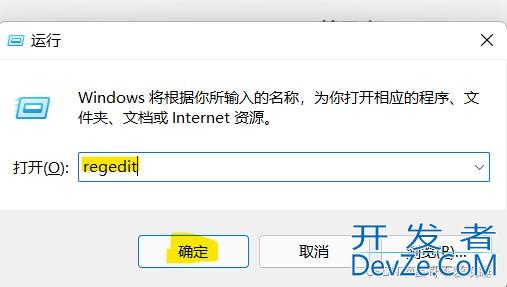大数据量下Redis分片的5种策略分享
目录
- 1. 取模分片(Modulo Sharding)
- 工作原理
- 实现示例
- 优缺点
- 适用场景
- 2. 代php理分片(Proxy-based Sharding)
- 工作原理
- Twemproxy配置示例
- 优缺点
- 适用场景
- 3. Redis Cluster
- 工作原理
- 配置与搭建
- 客户端支持代码示例
- 优缺点
- 适用场景
- 4. 一致性哈希分片(Consistent Hashing)
- 工作原理
- 实现示例
- 优缺点
- 适用场景
- 5. 按范围分片(Range-based Sharding)
- 工作原理
- 实现示例
- 优缺点
- 适用场景
- 结论
1. 取模分片(Modulo Sharding)
取模分片是最直观的哈希分片方法,根据键的哈希值对节点数取模来确定分片位置。
工作原理
- 计算键的哈希值
- 对节点总数取模得到节点索引
- 将操作路由到对应节点
实现示例
public class ModuloSharding {
private final List<JedisPool> shards;
public ModuloSharding(List<String> redisHosts, int port) {
shards = new ArrayList<>();
for (String host : redisHosts) {
shards.add(new JedisPool(new JedisPoolConfig(), host, port));
}
}
private int getShardIndex(String key) {
return Math.abs(key.hashCode() % shards.size());
}
public String get(String key) {
int index = getShardIndex(key);
try (Jedis jedis = shards.get(index).getResource()) {
return jedis.get(key);
}
}
public void set(String key, String value) {
int index = getShardIndex(key);
try (Jedis jedis = shards.get(index).getResource()) {
jedis.set(key, value);
}
}
// 节点数变化时需要重新映射所有键
public void reshardData(List<String> newHosts, int port) {
List<JedisPool> newShards = new ArrayList<>();
for (String host : newHosts) {
newShards.add(new JedisPool(new JedisPoolConfig(), host, port));
}
// 这里需要迁移数据,遍历所有键并重新分配
// 实际实现中需要更复杂的逻辑来处理大量数据的迁移
// ...
this.shards = newShards;
}
}
优缺点
优点
- 实现极其简单
- 在节点数固定时数据分布相对均匀
- 计算开销小
缺点
- 节点数变化时需要大量数据迁移(几乎所有键都会重新映射)
- 可能产生热点问题
- 不适合需要频繁扩缩容的场景
适用场景
- 节点数相对固定的场景
- 简单实现且对扩容需求不高的小型应用
- 数据量较小,可以接受全量迁移的系统
2. 代理分片(Proxy-based Sharding)
代理分片通过引入中间代理层来管理分片逻辑,常见的代理包括Twemproxy(nutcracker)和Codis。
工作原理
- 代理作为应用与Redis节点之间的中间层
- 客户端连接到代理而非直接连接Redis
- 代理根据内部算法将请求路由到正确的Redis节点
Twemproxy配置示例
alpha: 编程 listen: 127.0.0.1:22121 hash: fnv1a_64 distribution: ketama auto_eject_hosts: true redis: true server_retry_timeout: 2000 server_failure_limit: 3 servers: - 127.0.0.1:63WVdvX79:1 - 127.0.0.1:6380:1 - 127.0.0.1:6381:1
优缺点
优点
- 对应用透明,客户端无需感知分片细节
- 减少客户端与Redis的连接数
- 便于管理和监控
缺点
- 引入单点故障风险
- 增加了额外的网络延迟
- 扩容通常需要手动操作
- 代理层可能成为性能瓶颈
适用场景
- 需要对现有系统最小改动的场景
- 多语言环境下统一分片策略
- 连接数需要控制的高并发场景
3. Redis Cluster
Redis Cluster是Redis官方提供的集群解决方案,从Redis 3.0版本开始支持。
工作原理
- 使用哈希槽(hash slots)概念,总共16384个槽
- 每个键根据CRC16算法计算后对16384取模,映射到槽
- 槽被分配到不同的节点上
- 支持节点间数据自动迁移和复制
配置与搭建
节点配置示例:
port 7000 cluster-enabled yes cluster-config-file nodes.conf cluster-node-timeout 5000 appendonly yes
创建集群命令:
redis-cli --cluster create 127.0.0.1:7000 127.0.0.1:7001 127.0.0.1:7002 \ 127.0.0.1:7003 127.0.0.1:7004 127.0.0.1:7005 --cluster-replicas 1
客户端支持代码示例
// 使用Lettuce客户端连接Redis Cluster
RedisURI redisUri = RedisURI.Builder
.redis("127.0.0.1", 7000)
.withTimeout(Duration.ofSeconds(60))
.build();
RedisClusterClient clusterClient = RedisClusterClient.create(redisUri);
StatefulRedisClusterConnection<String, String> connection = clusterClient.connect();
RedisAdvancedClusterCommands<String, String> commands = connection.sync();
// 正常操作,客户端会处理集群路由
commands.set("user:1000", "张三");
String value = commands.get("user:1000");
优缺点
优点
- 官方原生支持,持续更新和维护
- 去中心化架构,无单点故障
- 自动故障检测和故障转移
- 自动处理节点间的数据分片和迁移
缺点
- 客户端需要支持cluster协议
- 多键操作受限于槽机制(必须在同一个槽)
- 资源消耗较高,通信开销大
- 配置管理相对复杂
适用场景
- 大规模Redis部署
- 需要高可用性和自动故障恢复
- 数据量和负载随时间动态增长
- Redis官方生态支持的环境
4. 一致性哈希分片(Consistent Hashing)
一致性哈希算法能够最小化节点变化时需要重新映射的键,适合节点经常变化的环境。
工作原理
- 将哈希值空间映射到一个环上(0到2^32-1)
- Redis节点被映射到环上的某些点
- 每个键顺时针找到第一个遇到的节点
- 新增或删除节点只影响相邻节点的数据
实现示例
public class ConsistentHashSharding {
private final SortedMap<Integer, JedisPool> circle = new TreeMap<>();
private final int numberOfReplicas;
private final HashFunction hashFunction;
public ConsistentHashSharding(List<String> nodes, int replicas) {
this.numberOfReplicas = replicas;
this.hashFunction = Hashing.murmur3_32();
for (String node : nodes) {
addNode(node);
}
}
public void addNode(String n编程客栈ode) {
for (int i = 0; i < numberOfReplicas; i++) {
String virtualNode = node + "-" + i;
int hash = hashFunction.hashString(virtualNode, Charset.defaultCharset()).asInt();
circle.put(hash, new JedisPool(new JedisPoolConfig(), node.split(":")[0],
Integer.parseInt(node.split(":")[1])));
}
}
public void removeNode(String node) {
for (int i = 0; i < numberOfReplicas; i++) {
String virtualNode = node + "-" + i;
int hash = hashFunction.hashString(virtualNode, Charset.defaultCharset()).asInt();
circle.remove(hash);
}
}
public JedisPool getNode(String key) {
if (circle.isEmpty()) {
return null;
}
int hash = hashFunction.hashStrpythoning(key, Charset.defaultCharset()).asInt();
if (!circle.containsKey(hash)) {
SortedMap<Integer, JedisPool> tailMap = circle.tailMap(hash);
hash = tailMap.isEmpty() ? circle.firstKey() : tailMap.firstKey();
}
return circle.get(hash);
}
public String get(String key) {
JedisPool pool = getNode(key);
try (Jedis jedis = pool.getResource()) {
return jedis.get(key);
}
}
public void set(String key, String value) {
JedisPool pool = getNode(key);
try (Jedis jedis = pool.getResource()) {
jedis.set(key, value);
}
}
}
优缺点
优点
- 节点变化时最小化数据迁移
- 相对均匀的数据分布
- 适合动态伸缩的环境
缺点
- 实现较为复杂
- 虚拟节点引入额外的内存开销
- 数据分布可能仍有不均衡现象
适用场景
- 节点频繁增减的环境
- 需要动态扩缩容的大型应用
- 对数据迁移成本敏感的场景
5. 按范围分片(Range-based Sharding)
按范围分片基于键值的范围将数据分配到不同节点,特别适合有序数据集。
工作原理
- 预先定义键的范围划分
- 根据键所属范围决定存储节点
- 通常结合有序键使用,如时间序列数据
实现示例
public class RangeSharding {
private final TreeMap<Long, JedisPool> rangeMap = new TreeMap<>();
public RangeSharding() {
// 假设按用户ID范围分片
rangeMap.put(0L, new JedisPool("redis1.example.com", 6379)); // 0-999999
rangeMap.put(1000000L, new JedisPool("redis2.example.com", 6379)); // 1000000-1999999
rangeMap.put(2000000L, new JedisPool("redis3.example.com", 6379)); // 2000000-2999999
// 更多范围...
}
private JedisPool getShardForUserId(long userId) {
Map.Entry<Long, JedisPool> entry = rangeMap.floorEntry(userId);
if (entry == null) {
throw new IllegalArgumentException("No shard available for userId: " + userId);
}
return entry.getValue();
}
public String getUserData(long userId) {
JedisPool pool = getShardForUserId(userId);
try (Jedis jedis = pool.getResource()) {
return jedis.get("user:" + userId);
}
}
public void setUserData(long userId, String data) {
JedisPool pool = getShardForUserId(userId);
try (Jedis jedis = pool.getResource()) {
jedis.set("user:" + userId, data);
}
}
}
优缺点
优点
- 特定范围的数据位于同一节点,便于范围查询
- 分片策略简单明确
- 键与节点的映射关系易于理解
缺点
- 可能造成数据分布不均
- 热点数据可能集中在某个分片
- 重新分片操作复杂
适用场景
- 时间序列数据存储
- 地理位置数据分区
- 需要支持高效范围查询的场景
结论
Redis分片是应对大数据量挑战的有效策略,每种分片方法都有其独特的优势和适用场景。选择合适的分片策略需要综合考虑数据规模、访问模式、扩展需求以及运维能力等因素。
无论选择哪种分片策略,都应当遵循最佳实践,包括合理的数据模型设计、良好的监控和预见性的容量规划,以确保Redis集群的稳定性和高性能。
以上就是大数据量下Redis分片的5种策略分享的详细内容,更多关于Redis分片策略的资料请关注编程客栈(www.devze.com)其它相关文章!









 加载中,请稍侯......
加载中,请稍侯......
精彩评论